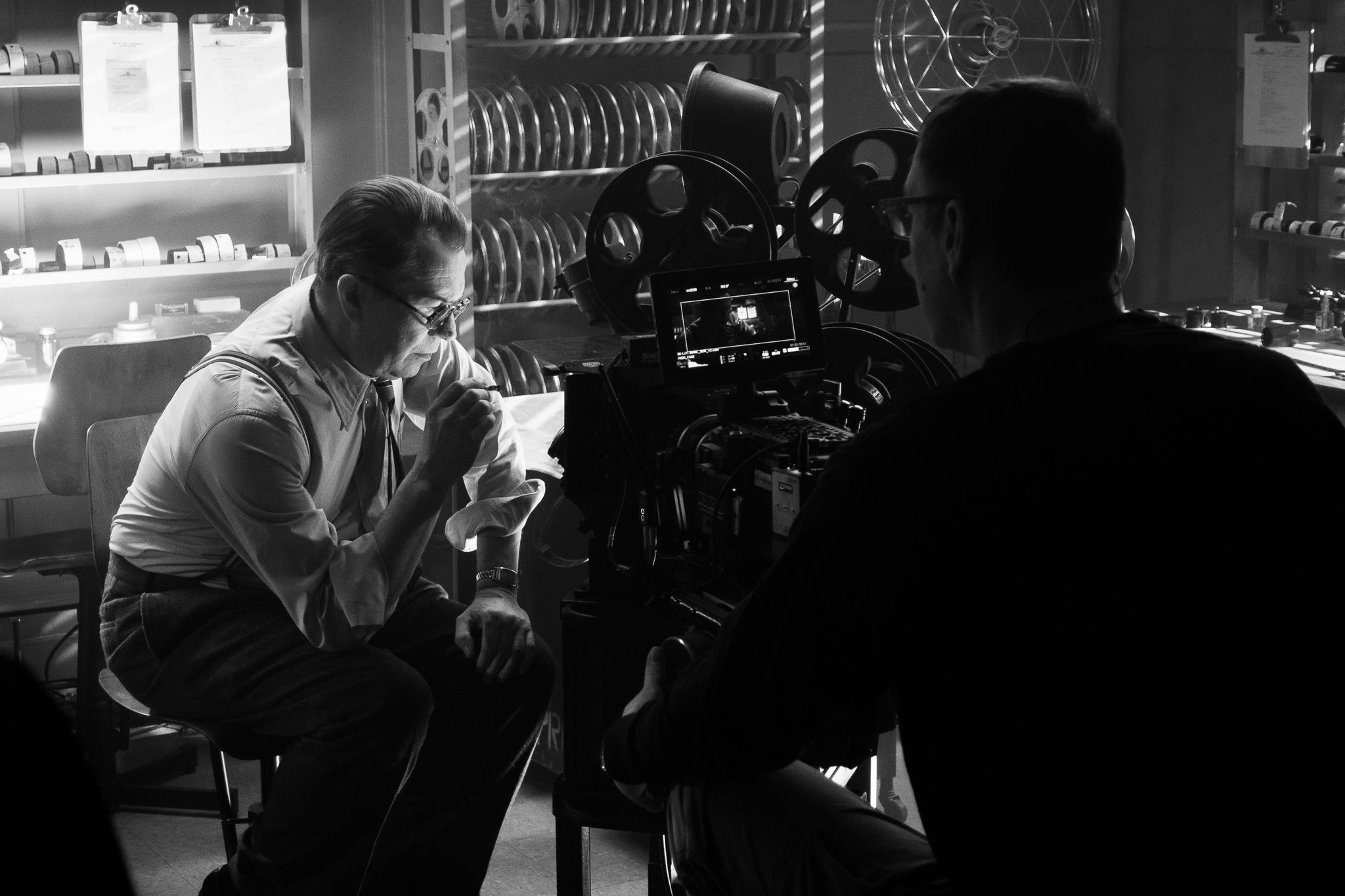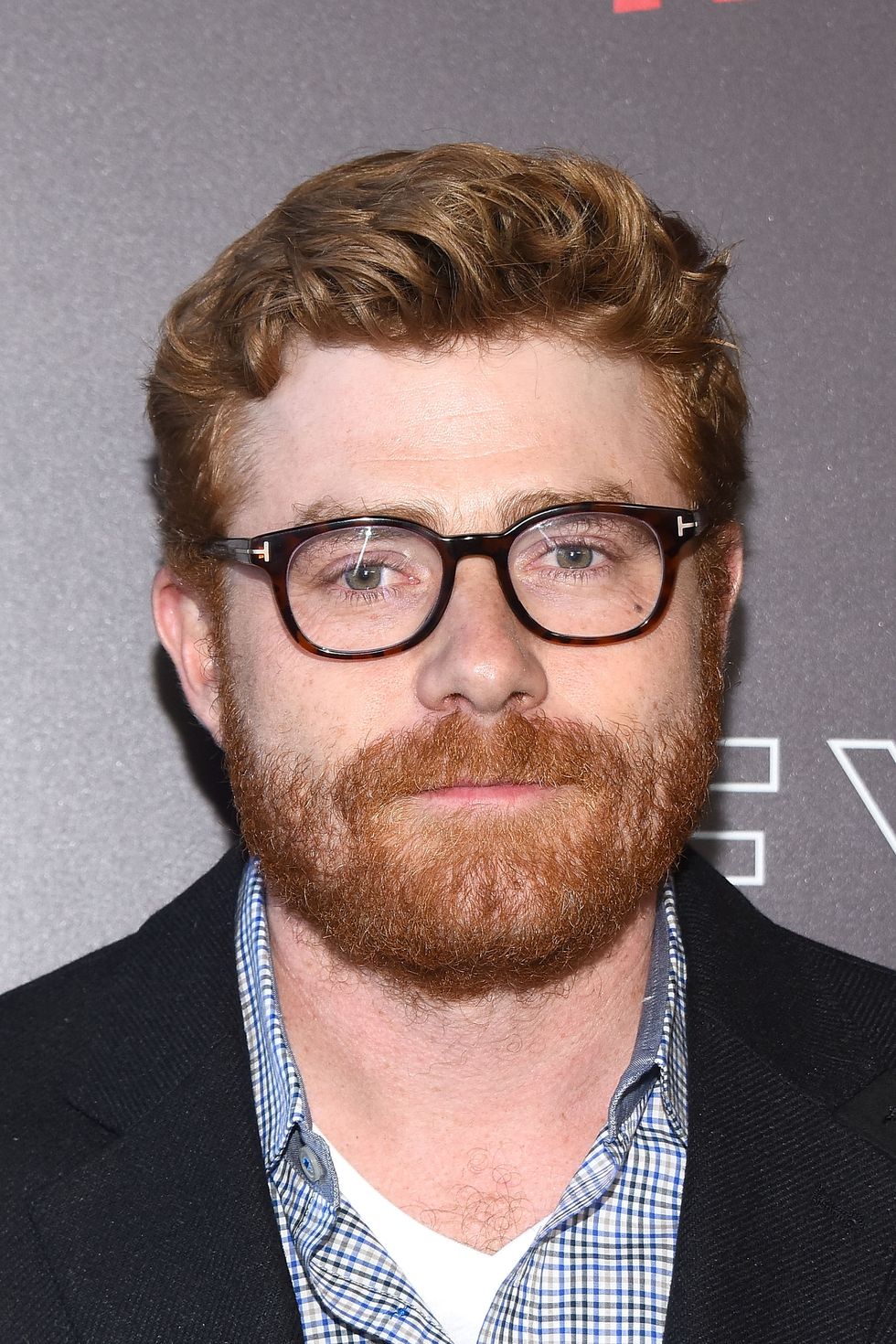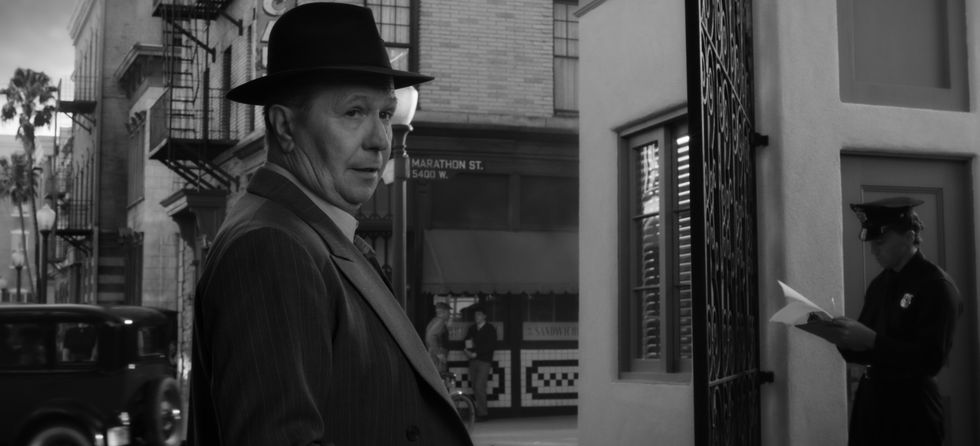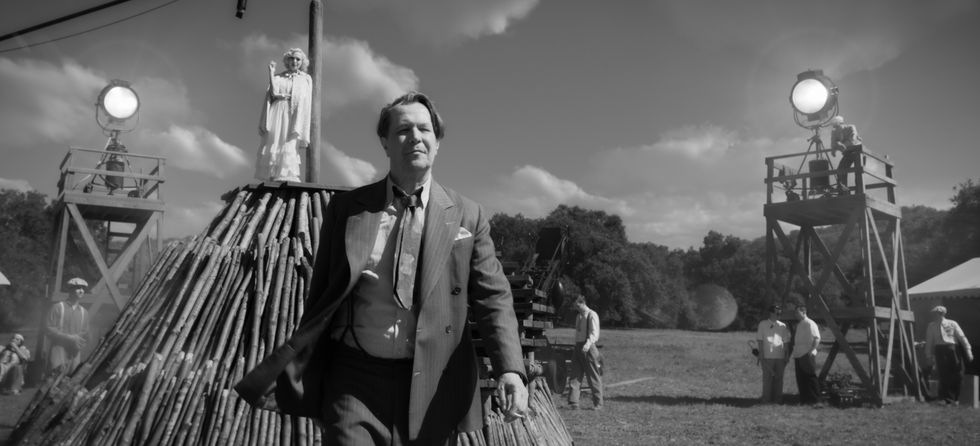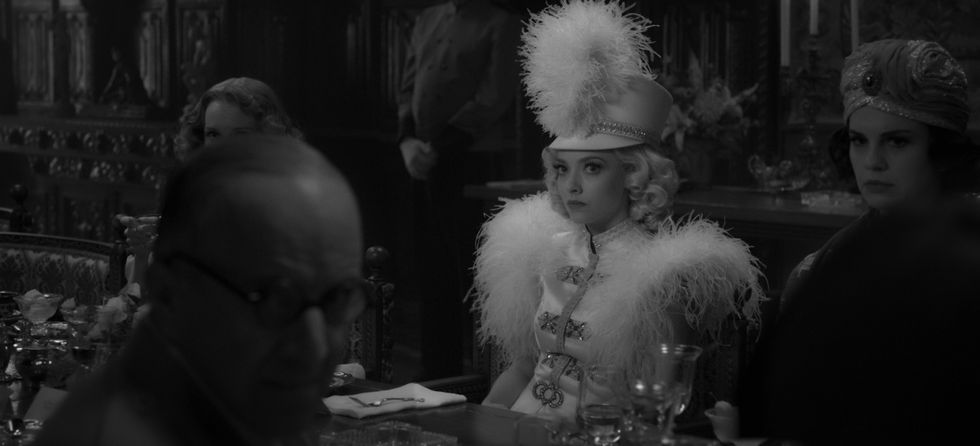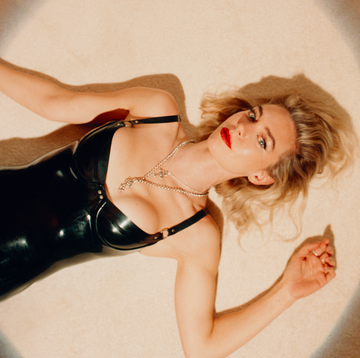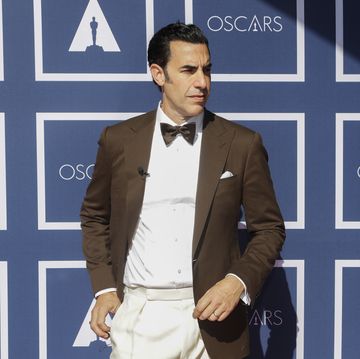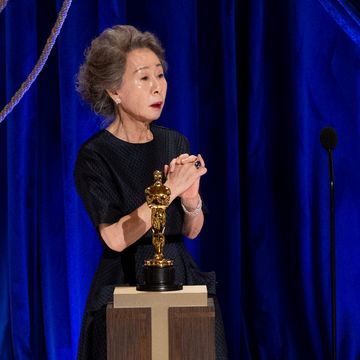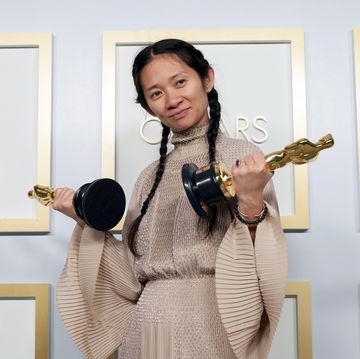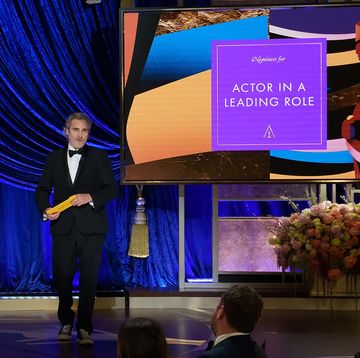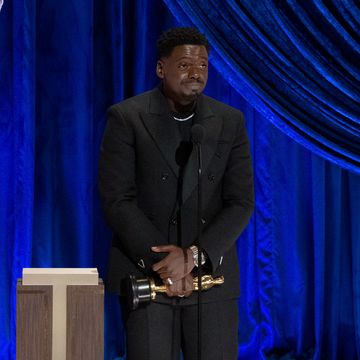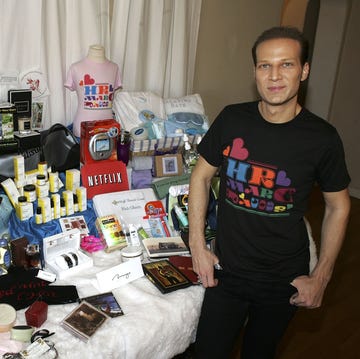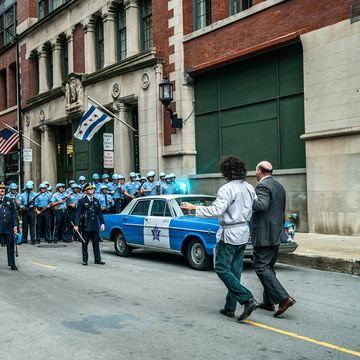Who made Citizen Kane great? Was it Orson Welles, as history dictates? Or was it Herman Mankiewicz, a screenwriter history barely remembers?
That is a horribly simplistic reading of David Fincher’s terrific new movie Mank, starring Gary Oldman and on Netflix now. (It would be as accurate to say it is a movie about the business of making movies; plus politics, propaganda, friendships, fake news and a whole lot more.) Film scholars have argued back and forth for decades. But there’s another school of cineaste that says it was neither Welles nor Mankeiwicz who made Citizen Kane The Greatest Movie Ever Made. It was the six-time Oscar nominated cinematographer Gregg Toland, acclaimed for his work on Wuthering Heights (1939) and The Grapes of Wrath (1940) and his pioneering use of dramatic shadow and ‘deep focus’ (everything in focus at the same time).
You might level a similar debate at Mank. Jaw-dropping direction by Fincher, wisecracking script by Fincher’s dad, whizzy lead turn by Oldman – but history may well decide the star of the show is not them, but the film’s cinematographer.
Mank is a swoonsome and stylish time machine to 1930s and 1940s Hollywood, part-retro tribute, part modern remake – all technically perfect and never, ever pastiche. Its gleaming black and white look is down to cinematographer Erik Messerschmidt in his first job as director of photography. It is some debut. Having previously collaborated with Fincher on Gone Girl and Mindhunter, and more recently Ridley Scott on Raised by Wolves, Messerschmidt is currently odds-on favourite for a Best Cinematography nomination in 2021 Oscars. Perhaps it’ll be the first of half-a-dozen nods – like Gregg Toland.
Here he tells Esquire how he and Fincher made Mank. Contains spoilers.
What were the first conversations you had about the look of the film?
We talked about Citizen Kane, obviously. There’s an obvious inclination to reference that and use it as a springboard. But it's a very different film. Citizen Kane had these cavernous interiors and it’s set in this giant castle. It’s a little bit of caper. Our film is much broader in terms of the variety of locations. We're in the desert, we’re in studio lots. So we felt like the movie should be grounded in some degree in realism, with the opportunity to lean into the style lighting [of Kane] when it was appropriate. I pulled some references for David [Fincher] and we shared images back and forth and it just kind of took shape from there.
What other films did you look at?
So many of them. The Night of The Hunter. Rebecca. The Grapes of Wrath was a big influence. We looked at that quite a bit for the exterior work at the bungalow [where Mank spends the 1940s sections of the film bedridden]. Gregg Toland shot that film as well. We looked at modern films too. I watched Manhattan a couple of times, that’s one of my favourite films. I was interested in having the 1940s scenes have a slightly more modern look than the flashback [1930s] sequences. The flashback sequences at the studio lot and the election party and at Hearst Castle would be slightly more period looking. And the bungalow would be more ‘modern’ black and white.
Were you concerned it might be taken the wrong way, as pastiche?
I was nervous the entire time. I felt like black and white could so quickly become a parody of itself. I didn't want to light things a certain way because we were “in black and white”, you know? That felt false. "Oh, here's an opportunity to send a Venetian blind shadow through the window" [laughs]. I was really, really trying hard to approach what the scene was first and [then] black and white was the last bit of the conversation. That was the attempt anyway. David was particularly interested in the idea of transporting the audience to a place and trying to envelop them in the world of 1930s Hollywood. But there’s a balance. You want to make sure that the audience don’t feel they’re constantly reminded of the fact that they’re watching a black and white film. That they, you know, forget about it, to a degree.
Is there a difference between shooting in black and white and shooting in colour, then turning it black and white?
Yes, totally. It’s quite a striking difference. And it was a difference that we didn’t appreciate until we shot some tests, actually. We looked at both and it was unbelievably evident within seconds of watching footage on screen.
I'm guessing black and white brings another set of issues when it comes to costumes and scenery. You trying to convey lavishness and glamour, without the aid of colour.
Absolutely right. In colour photography we use colour as a means of describing depth. We call it colour separation. You use contrasting colours or shades of colours in the frame to explain the three-dimensionality of the shot. You throw the backgrounds out of focus and use colour separation – that's a technique. In black and white photography you don’t have that. You’re relying on shade and texture and contrast. It’s a different beast. And regarding colours on set, it’s not just the costumes but also things like the paint. Trish Summerville, the costume designer, and Don Bert, the production designer and I did a tremendous amount of testing. Certain colours really show up differently than others.
Didn’t you spend ages choosing the right shade of green tiles for the bathroom scene where we meet Joe Mankiewicz?
[Laughs] To anyone else that would have appeared to be a ridiculous amount of time. We got quite specific. It was days. There were many different iterations of green that would create different results on camera. Some greens would look very black, some greens would look more middle-grey. To the naked eye it looks kind of similar. It was a long testing process of picking our palette. I mean, obviously there were other things going on as well.
This was your first movie as director of photography. David Fincher’s directing, using a script left by his dad. You’re taking on Citizen Kane. Gary Oldman, too. Wasn’t that quite nerve-racking?
I felt a tremendous weight of responsibility. For David and the subject matter. Orson Welles is a titan and I knew that the movie would be looked at closely. I felt the weight of that. I was certainly intimidated to some degree. But David and I have been working together now for many years. I know him quite well at this point and I'm comfortable working with him. One of the main roles of cinematographers is to assimilate themselves into the director's working practice and support it. I have become quite used to and fond of working with David. It’s an absolute joy for me. So, in that sense, I was thrilled and excited. Working with David wasn’t really particularly daunting but the scope of the project was, certainly.
Actors love to grumble that he does loads of takes. How do the crew feel about that?
You have to take that into consideration when you’re planning. Especially daytime scenes where the sun will move over the course of shooting. It’s a different conversation with a director who does one or two takes, where you may be able to get the entire scene in six or seven takes. So there are practical considerations. But I quite enjoying the process of refinements. You know, it's a bit of sculpture that he’s doing. He’s really honing it every time. So I come to really enjoy it. And it’s not like that when I'm not working with David. Sometimes you [shoot with another director] and you're, like, "Oh God, if we just did one more we could improve all these things..." David certainly does his share of takes, but I think it’s been a bit overblown, to be honest. Slightly hyperbolised.
Well, you keep working with him
Yeah, exactly. Maybe I'm just getting desensitised.
The pyre scene where we meet Louis Mayer and Marion Davies is fairly epic. Tell us about that
We actually shot that scene twice. The scene as it resides in the film is a reshoot. We weren’t quite happy with what we got the first time around. It’s quite a complex scene. It had to be planned around the position of the sun, which meant shooting things out of order – complicated and confusing. We were asking a lot of the actors. We really had to pre-visualise that and we had blocked it in advance. We went to an open field with some traffic cones that represented the set pieces and some folding chairs for Arliss [Howard, playing Louis B Mayer] and Ferdinand [Kingsley, playing ‘boy wonder’ producer Irving Thalberg] and laid it all out. And then David and I laid out all the camera positions and then we then we went back to the office and sort of laid that on top of the real set and figured out what orientation that set needed to be in order to protect the sun. That's quite a bit of prep, to do that. But one wonders of working for Fincher is he will go to that degree to protect the image. That's something you don't always get as a cinematographer.
Also epic: the final banquet scene
Again, that was extensively rehearsed. [Fincher] had done table reads in the office. Where the actors are sitting and working out the beats and the metre of the scene. Then when the set was near-finished we went in with "the main cast" – Arliss and Charles [Dance, playing William Randolf Hearst] and Gary [Oldman]. David started to work it out with Gary – where Gary would be and when he would stop, and when he would start. And because the entire scene is orbiting around Marion we tried to work out all the eyelines and get him to make sure when somebody’s looking left that Gary's where he's meant to be. You know there’s quite a number of shots in that scene and so it was a little bit of a puzzle to work it out. Marion is sort of the only person in that scene who’s lit, actually. She’s in this drab castle interior in this [radiantly] white outfit – it speaks to that idea of her being a woman with [everyone else] around her. She’s a bright little beacon, you know? We shot it for four or five days. It was a tremendous amount of work. And Gary did his performance for every take of every person’s shot. Even if we were shooting an extra reacting, Gary would do to the entire performance – the entire nine-minute monologue. So, it was remarkable thing to watch. And exhausting.
Aside from the bottle of scotch dropping from Mank’s hand – a nod to the ‘Rosebud’ snow globe – and the shot with the multiple mirrors, are there other Citizen Kane references people have missed?
The Thalberg funeral is meant to be a reference to the Walter Parks Thatcher Memorial Library scene, actually. The shaft of light on the casket, that kind of thing. The theatrical fade-outs between flashback scenes were certainly a reference to Kane.
Mank is streaming on Netflix and in ‘selected’ cinemas. Do you have a preference for where people see it?
I would be thrilled if they could see it on the big screen. There is something about the captive audience of the movie theatre that helps a film like this. It forces them to watch – instead of hitting pause and getting up and making the children dinner.
Isn’t there an irony that some people will film that painstakingly recreates the epic glamour of old Hollywood on an iPhone?
Yeah... I have grown accustomed to the reality that filmmakers have no control over the way that their content is consumed. So you do your best to give people as many opportunities as you can to see it. I mean certainly we don't make it any differently. It’s made with the hope and the intention that it’s viewed on a 60-foot theatrical screen. If people choose to watch it on an iPhone they’re missing out a bit, I might say. But, you know, hopefully they enjoy it regardless.
Are there screenwriters in Hollywood today who are anything like Mank?
It’s such a different world from mine. But there are certainly script doctors that are relegated to fixing other people’s scripts. You know, working behind the scenes to some degree. Mank was a bit of that. Then he got this film and said ‘Well look, hold on: I want this one to resonate’. There’s certainly screenwriters like that in Hollywood. Absolutely.
Who do you think deserves the main credit for Citizen Kane?
From what I know it certainly seems Mankiewicz was responsible for the screenplay that was handed to Welles. But if the screenwriter sets the table, the filmmaker has to serve the dinner. I think the idea of "authorship" is an interesting conversation in filmmaking. Because filmmaking is a team sport. Credit where credit’s due is a conversation to be had but in the end it’s a bit irrelevant. Because it requires a village. And people have to have some shared tastes and sensibilities to accomplish that. In the case of Citizen Kane – in my opinion, anyway – Welles creating the environment for Mankiewicz to write the script makes him complicit. So that right there is an example of collaboration. That is what directors so. I think it’s an interesting debate but I'm not sure how interesting it is in terms of, you know, delineating the line between "this person is responsible for this" and "this person is responsible for that".
As someone likely to be nominated for an Oscar for cinematography, have you got any tips on looking good on Zoom?
Elevate your computer or your camera, so it’s above your nose – that would be my first first bit of advice. So we’re not looking at you all the time. And put a nice north-facing window in front of your face, so you have some beautiful soft light. That’s what I do at home. Actually I was experimenting a bit earlier connecting my camera to Zoom and making a ‘normal’ version of me and then a ‘glamour’ version of me, then a kind of ‘1990s action movie' version. Every time I had a Zoom call with somebody it was a different stylistic iteration. It was just fooling around.
Mank is out now
Like this article? Sign up to our newsletter to get more articles like this delivered straight to your inbox
Need some positivity right now? Subscribe to Esquire now for a hit of style, fitness, culture and advice from the experts
